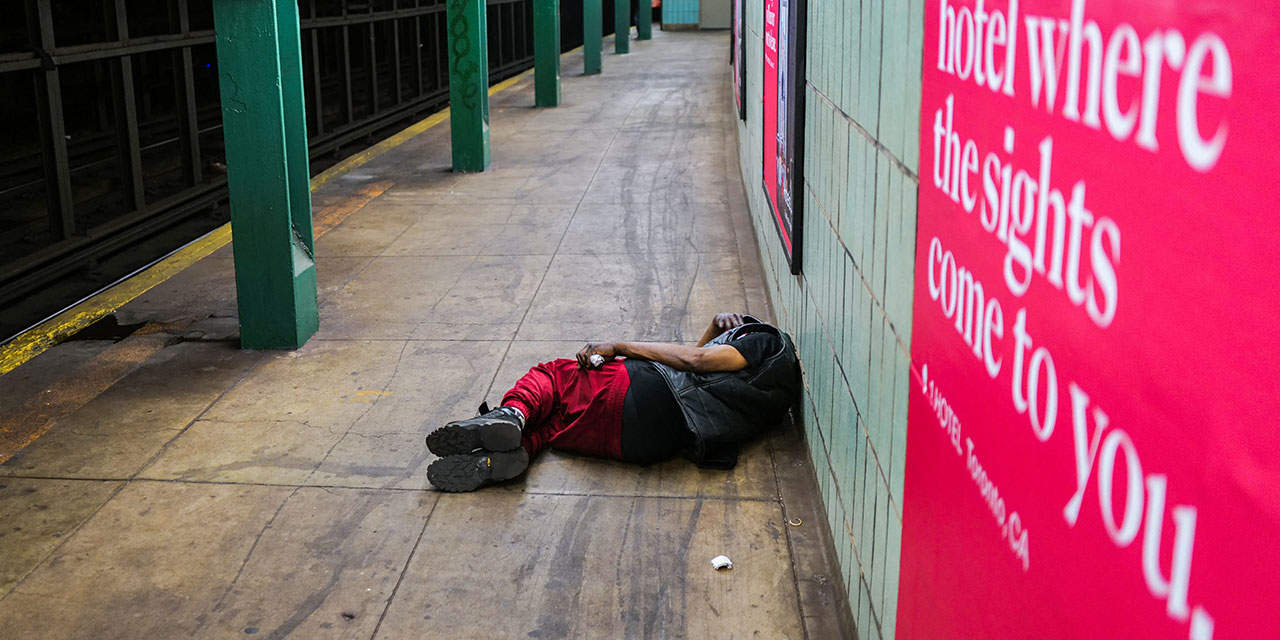
New York City mayor Eric Adams has developed a pilot program to sanction adult homeless-shelter clients who are unruly and/or unresponsive to housing offers. Pending due process, ejection could result, with exceptions made for the mentally ill. The goal is to create a “culture of accountability” throughout New York’s shelter system.
Enhanced Client Placement Support, as the program is called, partially reinstitutes a Bloomberg administration policy. It represents welcome attention being paid to mainstream homeless services, too often neglected amid the migrant crisis. Struggling to shelter more than 200,000 border arrivals over the past few years has left the Adams administration with scant bandwidth to ponder how to help tens of thousands of city natives already residing in shelters.
Finally, a reason to check your email.
Sign up for our free newsletter today.
Progressives don’t like the sound of this “accountability” business. At a recent hearing of the city council’s General Welfare Committee, Council Member Tiffany Caban voiced concerns. The Coalition for the Homeless has charged that the new policy will increase street homelessness. In response, administration officials have emphasized the initiative’s pilot nature, small scale (only 20 shelters will be involved to start), and due-process protections.
The city could go even further. Stricter rules would lead to safer shelter conditions. Surveys of the unsheltered—including those conducted by progressive advocates—consistently cite safety concerns as a key reason for avoiding shelters. So whatever “push” effect the new policy has on those currently in shelter may be offset by a “pull” effect: drawing in people from the streets and subways. The policy could also strengthen shelter programs, whose efforts to motivate clients are often undercut by a small number of intractable cases.
Progressives tend to oppose attaching behavioral conditions to government benefits. At present, though, New York City’s health and social services systems are not known for setting high expectations. The Adams administration has embraced harm reduction in addiction services and expanded the supply of Safe Haven shelter beds—a popular “low-barrier” intervention. The city is already doing plenty to “meet people where they are.”
How to fix the shelter system is a basic governance question that officeholders can’t avoid—but one candidates often prefer to sidestep. In this year’s mayoral race, few have offered concrete ideas for improving shelters, focusing instead on grand housing plans that they seem to have convinced themselves will make shelter provision an afterthought. But no administration has ever “housed its way” out of homelessness—and none ever will.
Election season also tends to obscure the hard tradeoffs involved in shelter policy. Unlike many other entitlements, shelter is a shared resource. Should policies be designed primarily for the unruly and intractable, or for the motivated and ready to move on? The city tries to minimize tradeoffs by operating specialized shelters for different populations. But it’s not possible to tailor services to every individual’s unique needs. As with free transit or lax school discipline, shelter policies that cater to the hardest cases often impose real costs on those just one step ahead of them.
The system has long resisted accountability. Past efforts include the Bloomberg administration’s Performance Incentive Program for shelter providers and a push to require every client to follow an “independent living plan”—failure to comply with, the city said, would have “serious consequences, including but not limited to the temporary discontinuance of shelter services.” Implementation won’t be easy this time, either. The more due process is involved, the harder it will be for shelter staff to enforce new procedures. Mayor Adams will also have to depend on social-services and provider personnel whose loyalty is uncertain—given his shaky reelection prospects and unpopularity among the progressive Democrats who dominate many homelessness agencies.
When Adams took office, the city’s traditional native homeless population was shrinking. A few months later, around the time the migrant crisis began, that population began to grow, and it’s now about 25 percent larger than in spring 2022. The city expects the migrant shelter population to keep declining; trends are more worrisome for the native population. Whoever wins this fall’s mayoral election will be tasked with designing the post-migrant shelter system. Mayor Adams has made a constructive start.
Photo by CHARLY TRIBALLEAU/AFP via Getty Images
City Journal is a publication of the Manhattan Institute for Policy Research (MI), a leading free-market think tank. Are you interested in supporting the magazine? As a 501(c)(3) nonprofit, donations in support of MI and City Journal are fully tax-deductible as provided by law (EIN #13-2912529).
Source link


















